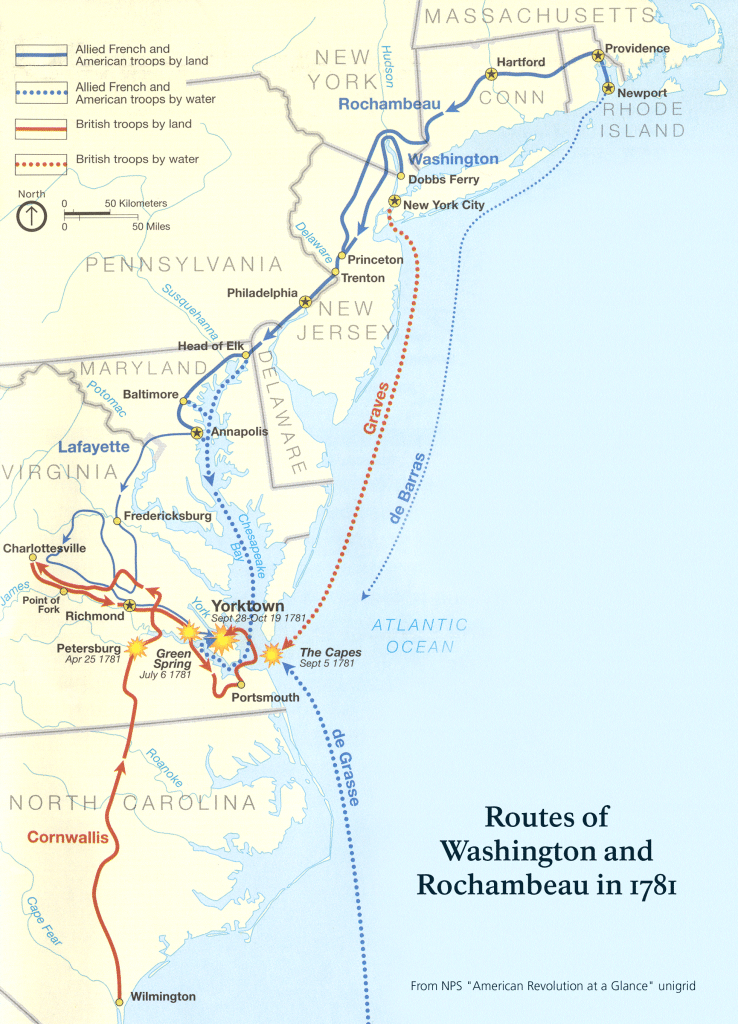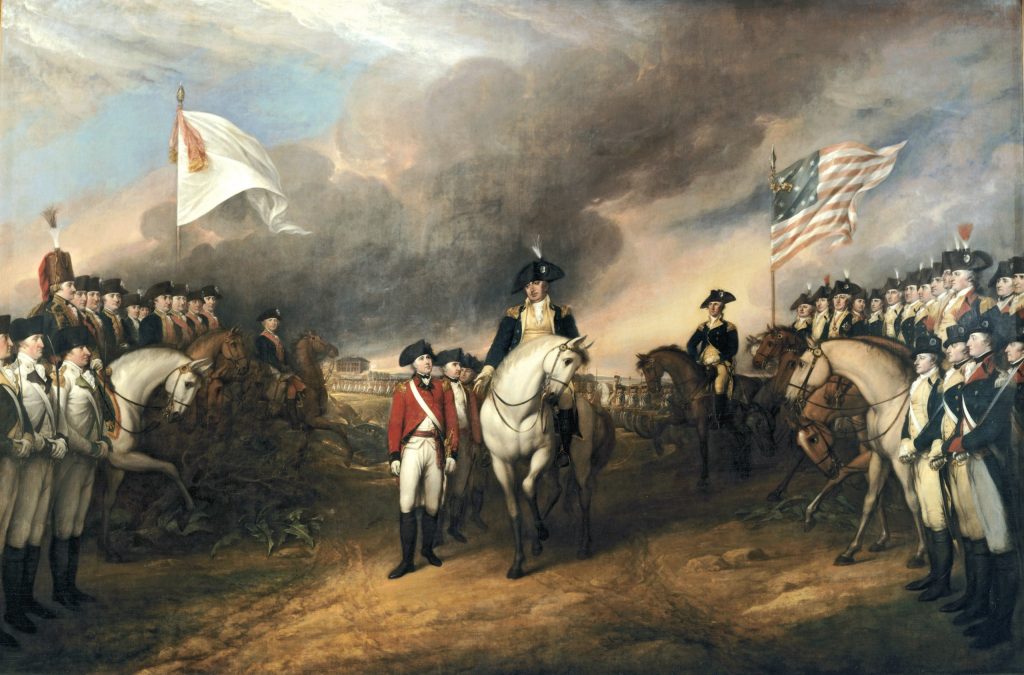Contents
Contents
The Battle of Yorktown, also known as the Siege of Yorktown, was fought between the British Army and the combined forces of the French and Continental Armies between September 28 and October 19, 1781.
This was the final major battle of the Revolutionary War, marking victory in the conflict for the United States.
Summary
Leadup
Following the Battles of Saratoga, the French Army joined the Revolutionary War on the Patriot side in early 1778.
Though bolstered by French support, by 1781, the Continental Army was exhausted. The colonies were suffering from significant food shortages after years of fighting.
However, the British were also struggling. They too were tired of fighting, and were struggling to keep their troops supplied from across the Atlantic.
After the Anglo-French War broke out in 1778, with the Spanish joining the French side a year later, the British were also fighting a major war in Europe, and their involvement in America was deeply unpopular among ordinary citizens.
As Commander-in-Chief of the Continental Army, George Washington knew that it was time to strike a decisive blow against the British, to try and force their withdrawal from America.
Washington and his troops were positioned north of New York, which the British controlled, and the city was the obvious choice for an attack.
However, he was convinced by French General Comte de Rochambeau to instead march south, to launch a surprise attack on British General Charles Cornwallis‘s men at Yorktown, Virginia.
Cornwallis was dug in at Yorktown, expecting a resupply by sea. Therefore, French naval forces under the command of Admiral Comte de Grasse set up a blockade of Chesapeake Bay, and successfully repelled the British Navy at the Battle of the Capes (also known as the Battle of the Chesapeake) on September 5, 1781.
On land, French forces in Virginia under the command of Marquis de Lafayette prevented Cornwallis and his men from escaping Yorktown.
Meanwhile, Washington, Rochambeau and their men marched hundreds of miles to Yorktown. There, they met up with Lafayette’s Virginia army, creating a combined force of nearly 20,000 to take on Cornwallis’s 9,000 British troops.
The battle

Upon arriving in Yorktown on September 28, the Americans and French began making their way towards the British fortifications.
The battle was immensely hard work for the Continental Army. Exhausted from their march to Yorktown, they then began the backbreaking job of digging miles of trenches, in order to shield their men from artillery fire as they advanced on British positions.
Cornwallis and the majority of his men were set up in heavy fortifications in the center of Yorktown. However, his army had also created a series of dirt fortifications, known as redoubts, on the outskirts of the city, which the allies had to navigate.
Gradually, the American and French forces were able to set up their artillery, though they did face British fire and suffered casualties during this process.
By October 7, the Patriots were able to open up the first parallel – a trench close to enemy fortifications, with the second parallel coming soon after.
By October 12, under constant cannon fire, the British position was becoming increasingly precarious. The second parallel was completed, and a huge number of artillery pieces were now in place. The French Navy was also occasionally sinking British ships in the York River.
The British began to lose their important 9th and 10th redoubts, and on October 16, Cornwallis unsuccessfully tried to escape with his men to Gloucester Point, located just across from Yorktown over the York River.
On October 19, the British officially surrendered to the allied forces, with 8,000 men captured.

Significance
After the Battle of Yorktown, the British government entered into peace negotiations with the newly formed United States.
Washington and Rochambeau’s victory at Yorktown was the decisive blow they were looking for, which finally forced the British Empire to abandon the Thirteen Colonies, and focus on wars they were fighting in other parts of the world.
In 1783, the British signed the Treaty of Paris, officially ending the conflict between Great Britain and the United States, and marking the culmination of nearly a decade of struggle for Washington and his Patriot forces.
In essence, Yorktown effectively ended the Revolutionary War, allowing America to begin building itself into the country it is today.
Facts
- Cornwallis did not attend the official surrender ceremony on the morning of October 19th, claiming that he was ill, and sending General Charles O’Hara in his place. Some historians doubt that Cornwallis was actually unwell, as no eyewitness accounts describe him as visibly ill on that day.
- Whether or not he was sick on the 19th of October, Cornwallis’s men did suffer from disease during the Siege of Yorktown, as malaria was rampant in eastern Virginia at the time.
- When marching down from New York, Washington’s men stopped in the state of Maryland, demanding one month of pay in gold or silver coin, and refusing to accept Continental money – the generally worthless currency printed by Congress at the time. The French stepped in and loaned the money necessary to appease the soldiers.
- The French and American forces marched 450 miles from New York to Yorktown – the longest troop movement of the war – in less than six weeks.
- The British Army is said to have played The World Turned Upside Down as they marched out to surrender, though this is disputed by some historians.

